If you buy through our links, we may earn an affiliate commission. This supports our mission to get more people active and outside.Learn about Outside Online's affiliate link policy
Triathlete's Spring Running Shoe Roundup
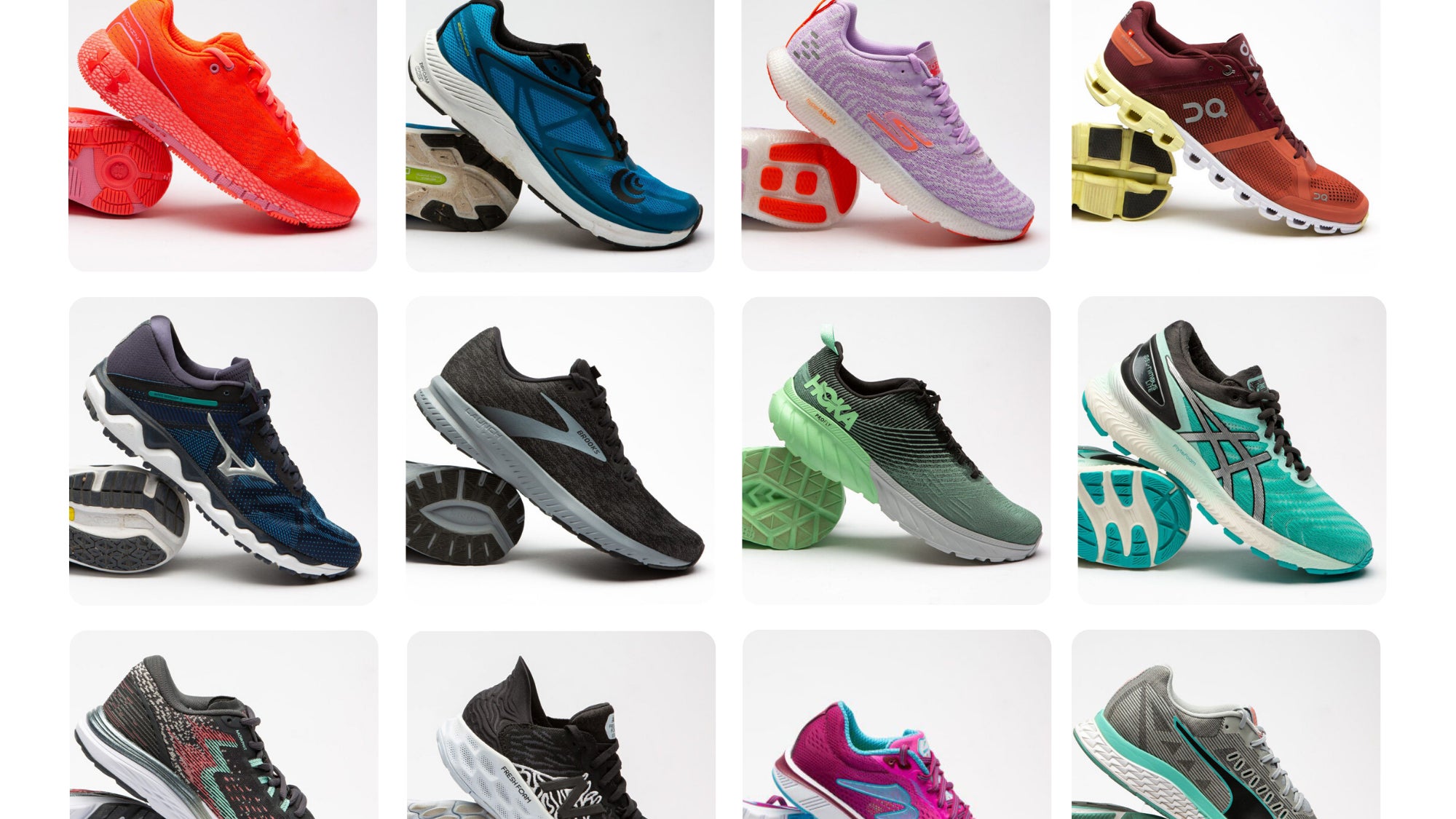
As running shoe stores across the country run low on kicks, given the sudden boost in people going outside (whether they want to or not), it’s more important than ever to separate the wheat from the chaff. With so many options from so many different brands now available, it can be tough to make sense of it all. We’ve broken up 16 pairs of running shoes into four categories: minimal, moderate, stable, and high energy. Our panel of experts—editors and experienced gear reviewers from Triathlete and Podium Runner—have put in the miles on all of these shoes to give readers informed and expert spring running shoe reviews to the shoes that follow. Jonathan Beverly, Adam Chase, and Chris Foster wrote these reviews.
Spring Running Shoe Reviews: Minimal
This category is made up of shoes that feel more responsive—for those who enjoy more road feel with a quicker footstrike. If you’re a nimble-footed runner with an efficient and effective stride, this might be the home for you. If you’re looking for a short-course pair of racing flats that aren’t exactly racing flats, this might be the home for you. If you like a lot of cush in your push, scroll further down.
Brooks Launch 7
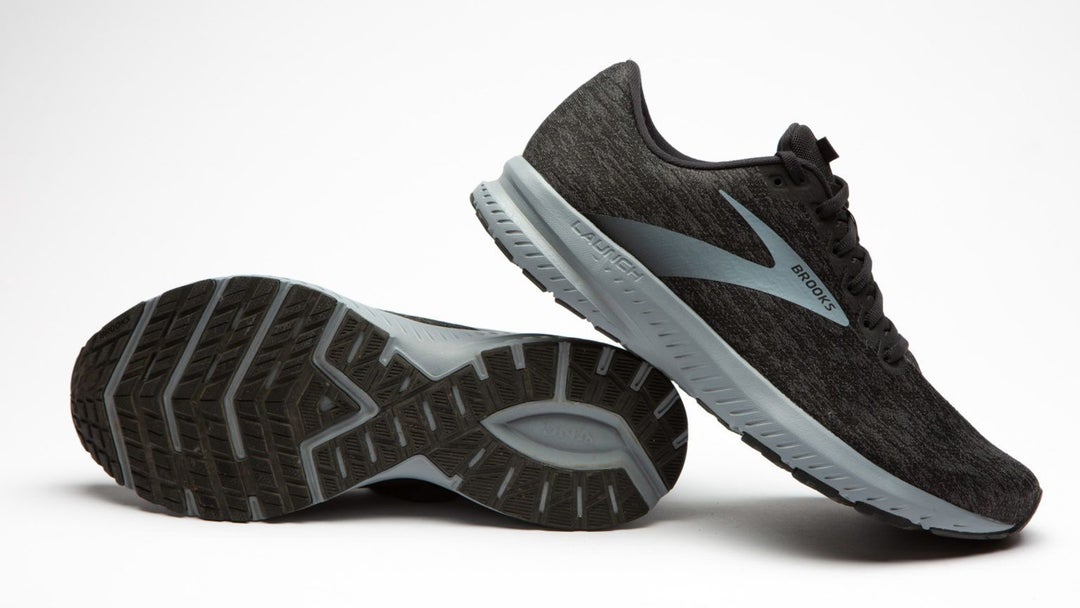
Weight: 8.8 oz (M) 8.1 oz (W)
Drop: ~10 mm
Price: $100
Roadrunnersports.com
TL;DR: This speedy daily trainer retains its classic ride, while getting an updated modern look and feel, making it more comfortable for putting in long miles.
In today’s post-minimalist environment, the Launch’s formula of providing simple, neutral cushioning has become the industry standard, and new materials have made many similar shoes lighter and springier. But the Launch 7 still delivers a familiar, comfortable ride that was much appreciated by many testers. “This is definitely a style of shoe my foot is most familiar with,” said one. “It didn’t take any time to get used to.” Though one tester expected more energy return and found the ride a bit “flat,” another, while noting that the foam felt firm in comparison to other recent models, said of the Launch, “This shoe has a fantastic responsiveness. It made me feel fast, like I had springs on my feet.”
New in the 7 is the sleek, one-piece mesh upper with an internal bootie that hugs the foot. Testers universally praised the fit: “I think this shoe has one of the best shapes I’ve ever run in,” one said. “I didn’t feel any loose or tight spots.”
In sum, one tester said, “The shoe made my feet feel happy, comfortable and not overworked.”
On Cloudflow 2
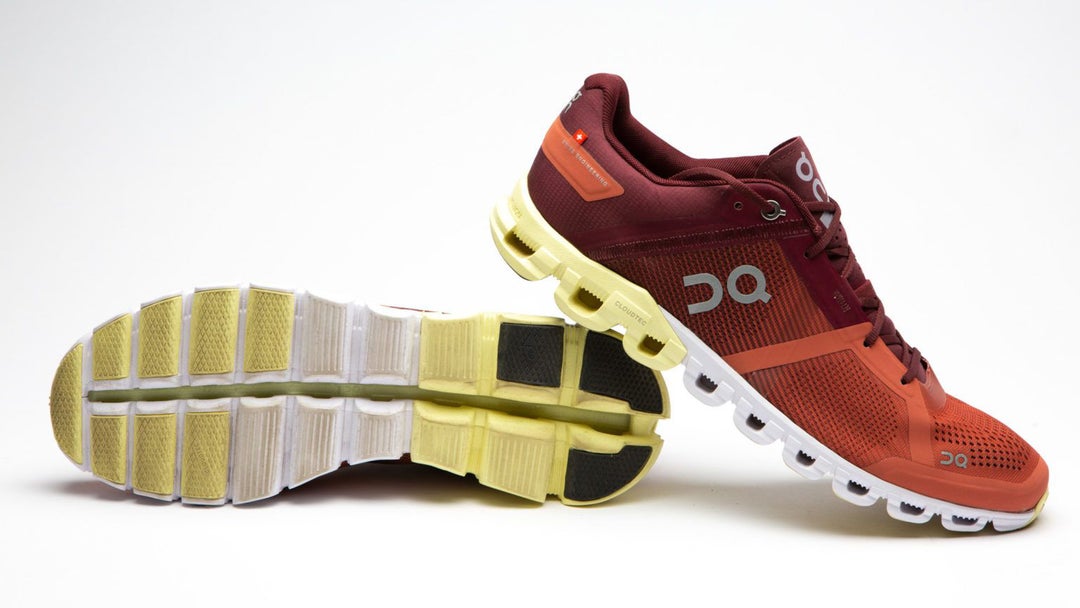
Weight: 8.3 oz (M) 7 oz (W)
Drop: ~6 mm
Price: $140
Jackrabbit.com
TL;DR: Beautifully engineered, lightweight speed-oriented trainer/racer.
Cloudflow’s new, firmer, more responsive foam in the 18 “Cloud” elements that serve as the foundation of the sole, got mixed reviews. The “clouds” are meant to compress to provide cushioning, then bottom out to allow a strong push-off. Most testers preferred the shoe’s responsiveness when they were moving at a faster clip, but when they slowed down the heel-toe transition felt abrupt. Similarly, when running with a quick turnover, the semi-rigid “speedboard” that connects and anchors the clouds felt like it enhanced the stride’s transition and power, but at slower speeds it simply seemed firm. Some observed the cushioning was inadequate for longer runs.
The uppers were very comfortable and the fit accommodated a wide variety of foot shapes. The Cloudflow 2’s new lacing configuration was not a winner, however. Testers almost unanimously dissed the laces, finding them too thin and reporting that they posed a real challenge for a tight, secure feel on the run. The outsoles held up nicely, with plenty of durability, but are not recommended for off-road use, especially where they might pick up small rocks or large gravel and carry it along for the ride.
“I enjoyed how light the shoe felt and the mix of firmness in the toe and cushion in the heel. The Cloudflow 2 felt slightly stiff for the first few runs but then I became more accustomed to it,” reported one tester. “Stylish, but certainly not confident enough to do much more than a couple of runs in them. I’ll wear these as casual shoes, though,” said another. “I wasn’t sure about these until I took them on a tempo run,” said a final tester. “Then they seduced me with a smooth, energy-return feel in the forefoot.”
Skechers GO RUN 7+ Hyper
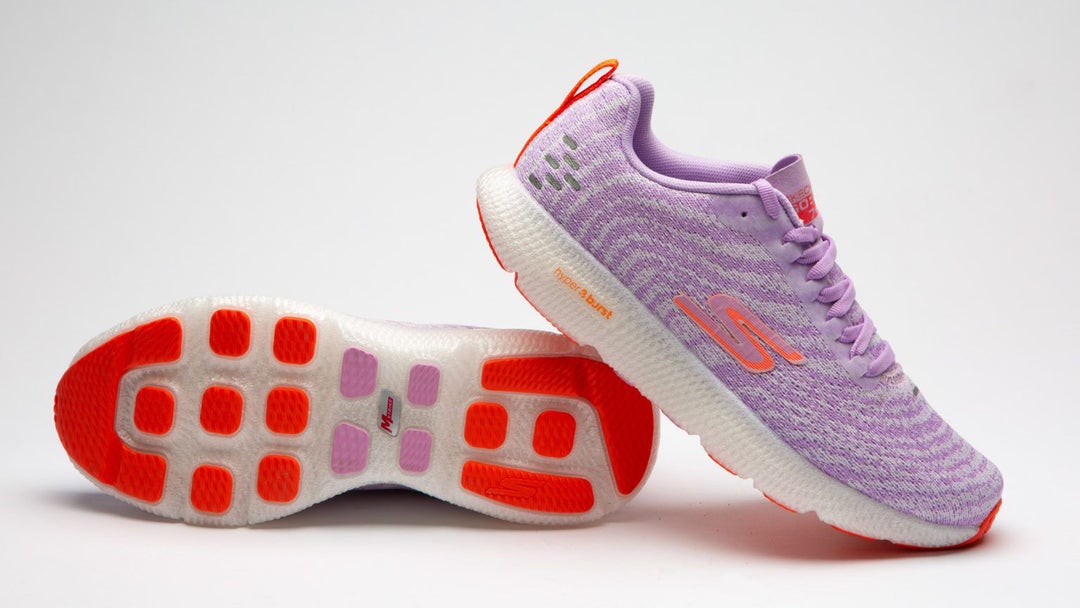
Weight: 7.6 oz (M) 6.1 oz (W)
Drop: ~4 mm
Price: $135
Skechers.com
TL;DR: A springy yet comfort-driven workhorse well suited for a variety of speeds and distances
“My favorite shoe of the whole lot,” beamed one tester who credited the “just right” 7+ Hyper for such esteemed praise. “Incredibly light and fast,” he described the shoe, “But protects my feet from fatigue and never feels flimsy no matter how long I go.” Another tester proclaimed them the “most comfortable shoe that I have ever run in” and chalked it up to the “super light, cushy, soft” experience. “It’s like running on clouds,” he said.
Skechers dialed in the thickness of its almost bouncy, cushioned Hyper Burst midsole so that it hit the sweet spot for a variety of testers who enjoyed the seemingly everlasting impact dampening. To help keep the neutral trainer as light as it is, Goodyear outsole rubber is only placed on strategic pillars for traction and durability.
The upper is where this model differs from the bootie-like GOrun 7. Skechers returned to a more traditional upper with a tongue and padded ankle collar, and used a circular knit reminiscent of their uber-comfortable, award-winning GOrun 4, circa 2016. The flexible, breathable wrap held the foot securely, except for hard cornering, where they felt a little sloppy. “This shoe is not too loose or too tight,” praised a tester.
This flexible performance trainer is light and comfortable enough that it would serve well for a marathon-distance race shoe, where its durable, dependable cushioning would shine.
Hoka EVO Jawz
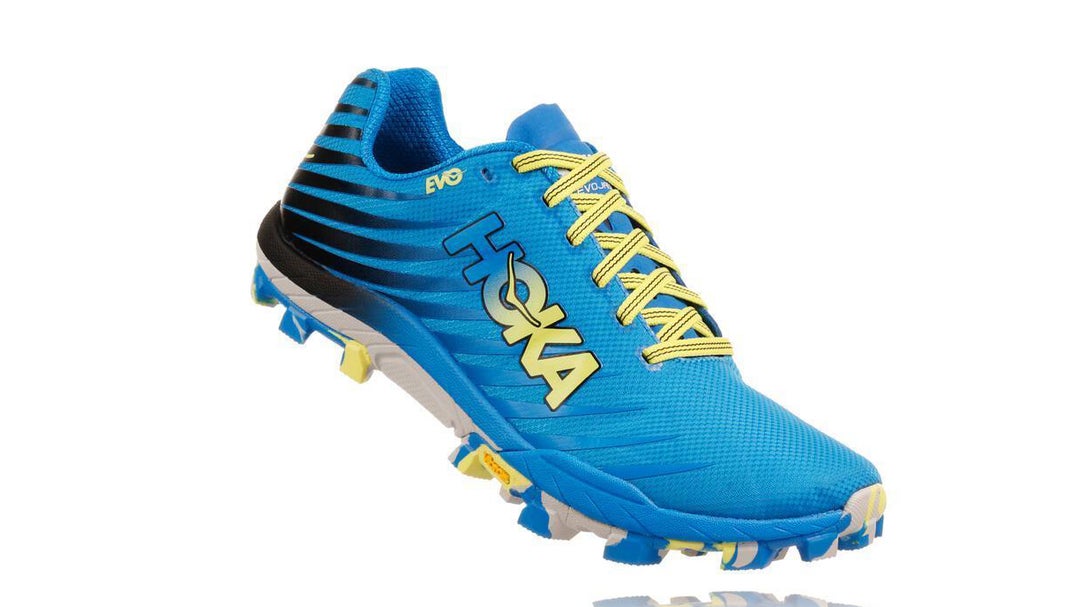
Weight: 7.2 oz (M) 6 oz (W)
Drop: 3mm
Price: $130
Hokaoneone.com
This pair of super minimal, yet over-the-top grippy, trail shoes has been a favorite amongst the swimrun set for a while, but there’s no reason these can’t stay dry too. The first thing testers noticed were the almost obtrusive size of the outsole’s lugs. Particularly near the front of the shoe, the lugs are not only huge and deep, but also very wide, and some testers foudn themselves catching the bottom of the shoe on tight and tricky rock sections. After a quick adaptation period, the lugs became more predictable and testers definitely appreciated the grip on wet and slippery rocks and light to moderate mud.
Oddly enough, these shoes weren’t exactly horrible for running on the road—the tread acted almost like another layer of cushioning, but durability on the road is definitely a question mark for the sticky Vibram outsole. Great drainage through the upper and a tight heel cup made these great in wet conditions (no surprise, given their swimrun heritage), and their light weight make the Jawz ideal for trail races or XTERRA events, though a heel tab (ironically found on many many other Hoka shoes) and a bigger tongue would go a long way toward this shoe’s multisport versatility.
Spring Running Shoe Reviews: Moderate
Here, expect to find a shoe that strikes a strong balance between pillowy soft and quickstep fast like the category above. While these shoes provide some support, if you know you need stability for any number of mechanics issues and don’t mind giving up some cush in the process, scroll down to the next category. For those who are efficient enough to go with something less stable, but who still want to remain in a traditionally cushioned shoe (in a world of high bounce), the moderate category is for you.
Mizuno Wave Horizon 4
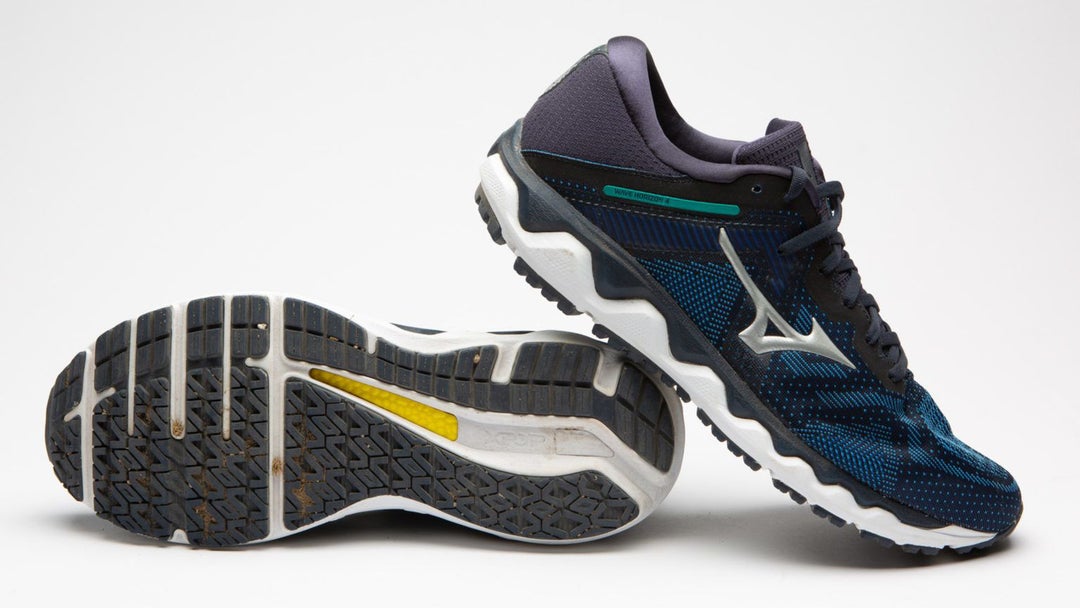
Weight: 11.1 oz (M) 9.7 oz (W)
Drop: ~10 mm
Price: $160
Hokaoneone.com
TL;DR: Plush cushioning, subtle stability, and upper comfort for smooth distance training on long roads
A posh, form-fitting, supportive trainer that is well appointed for long runs, the Horizon 4 could fall in either the cushioning or stability category. A major departure for Mizuno, this model has no plastic wave plate, instead it uses three types of material to create a “Foam Wave” that provides both stability and a soft, relaxed, “floating” ride. The bottom layer of cushioning foam creates the platform, and has more substantial wave lugs on the arch side for a touch of stability; above that, a ring of a second foam creates a cradle that surrounds the foot, while a third, high-rebound foam that lies under your sole.
The upper features a new technology that reduces the space between the foot and the engineered, durable jacquard mesh fabric. Testers found the fit and hold were very comfortable and secure, with a plush padded tongue and heel collar, plus substantial TPU overlays that wrap the instep and tie into the lacing.
The forefoot flex falls smack in the middle between floppy and rigid, delivering a more traditional heel-toe transition down the 10 mm drop from the heel, into the flex, and on to push off. The midsole and outsole held up to multiple kilometers with zeal, showing little wear over the test miles.
361 Spire 4
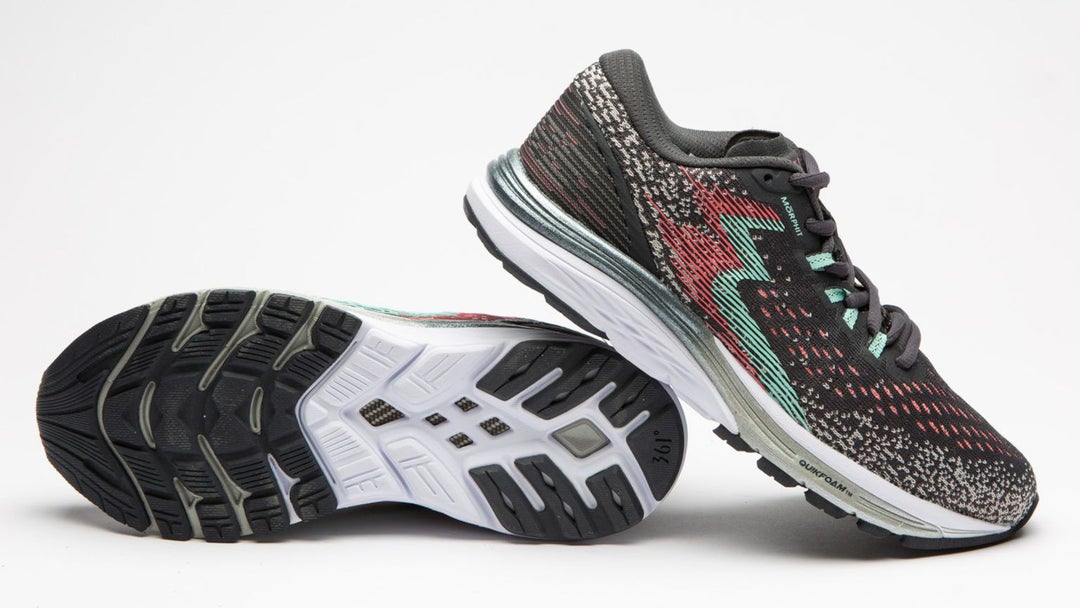
Weight: 10 oz (M) 8.2 oz (W)
Drop: ~9 mm
Price: $155
361usa.com
TL;DR: Utilitarian workhorse neutral trainer without gimmicks for strong, distraction-free running
361 improved its classic, lightweight neutral trainer by focusing on comfort and tinkering with the upper fit and midsole cushioning and responsiveness. While retaining a layer of their proprietary bouncy and durable QU!KFOAM, the surrounding EVA midsole has been retooled to be softer and more resilient.
One tester described the cushioning as “just right—offering good level of support without the clunkiness that often comes with a well-cushioned shoe. I would use these for speedwork.” Another said, “The new midsole material had a nice resilience to it and the shoes performed well in aiding an efficient gait.” The cushioning didn’t connect with all, however: One tester observed the shoe ran so cushy with his stride that, “it feels like it drains all the energy that you put into it.”
The fit is snug and supportive, with thick padding around the heel and a lace-integrated wrapping system securing the saddle. While it runs true to size, those used to wide toe boxes might find the Spire constraining. When it gets dialed-in, however, it disappears. “I didn’t think much about the Spire 4 while running and that’s a good thing,” summed up a tester. “In other words, these neutral shoes let you run easy and don’t create any noise.”
New Balance 1080v10
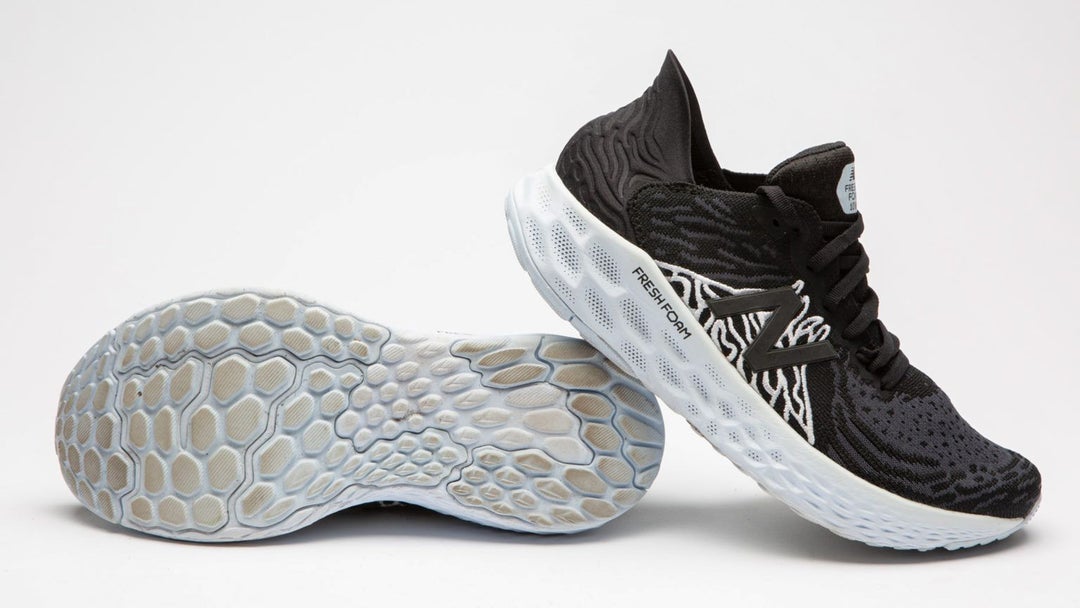
Weight: 10.3 oz (M) 8.9 oz (W)
Drop: ~8 mm
Price: $150
Roadrunnersports.com
TL;DR: Soft landings and smooth transitions from a flexible, comfortably-cushioned midsole and foot-grabbing upper
New Balance orchestrated a symphonic blend of comfort and performance with the 10th version of the 1080. The Hypoknit, bootie-like upper with its 3D molded heel cup draws all the attention, while the reformulated Fresh Foam X completes the soft and smooth-running package. While previous Fresh Foam models tended to deliver a ride that leaned to the firm side, this new compound gives both so-soft cushioning and an energetic rebound.
Testers were impressed by the cushioning, flexibility, transition and overall comfort. The cushioning from the Fresh Foam X midsole and blown rubber outsole stood out as exceptional, yet most of the test team also noted it didn’t diminish road feel, flexibility or responsiveness. A few felt that the softness made the ride a bit too squishy and unstable, one calling them, “very cushioned, good for recovery days not for long, hard days.” But other testers echoed the one who said, “I enjoyed the cushioning and support they offer, making them a good choice for longer runs and/or runs on concrete/tougher surfaces.”
Our testers did find the sizing ran small and detracted from their experience, so we recommend trying on a pair at a specialty running store to dial in the right fit.
Arc’Teryx Norvan LD 2
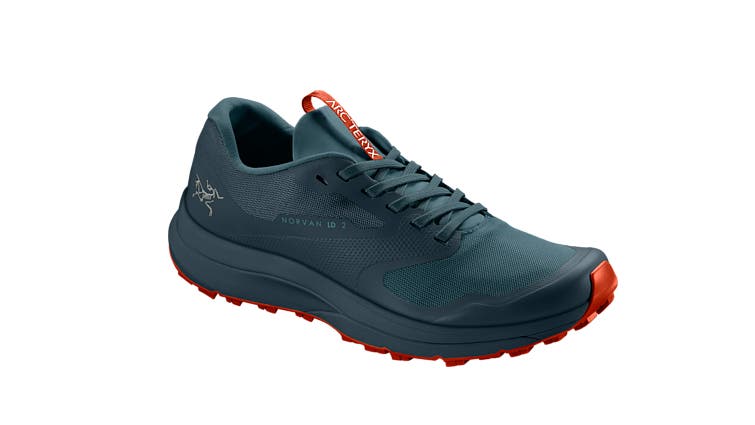
Weight: 9.2 oz (M) 7.8 oz (W)
Drop: 8mm
Price: $160
Rei.com
TL; DR: A lightweight pair of trail runners that are stiff, simple, slim, and consistent
While Arc’Teryx may not be the oldest brand in the running shoe game, they’re certainly experts on footwear and outdoor gear. While not perfect, the Norvan LD 2 reinforces the fact that Arc’Teryx also knows how to put a pair of running shoes together, and this lighter update to the original Norvan seems to be getting closer to the mark.
The outright simplicity of this pair of shoes definitely raised testers’ eyebrows, but the basic looks also broadcast the underlying predictability behind these shoes. The interior is lined with few seams and a surprisingly soft collar around the opening that testers really liked. The lack of wild colors and extras on the outside made this an easy pair to get dirty right away, and the similarly unremarkable Vibram outsole actually is a huge boon on uneven terrain.
All said, testers found this to be a surprisingly stiff pair of shoes that still remained responsive enough to live in the moderate category. The “pure basics” nature of this shoe is almost a moderating feature all its own that allows for more nimble off-road running.
Spring Running Shoe Reviews: Stable
Altra Provision 4.0
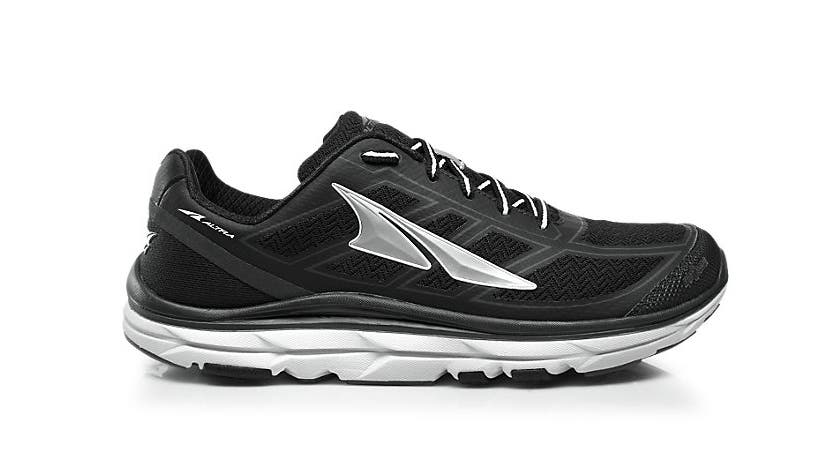
Weight: 10.5 oz (M) 8.2 oz (W)
Drop: ~0 mm
Price: $130
Backcountry.com
Tl;DR: The overhauled Provision provides subtle support and balanced cushioning for a stable ride without controlling.
While the Provision does provide several stability features, they are so unobtrusive you never notice them until you need them. Those stability features include an arch wrap that runs from all the way under the foot up to three tabs which tie into the laces. On the outside, a molded “GuideRail” extends up from the midsole, cuing your foot to reduce pronation when you drift too far inward. Plus, the foot-shaped design—inherent to all Altras—that allows the toes to splay and engage in active support provides the most important stability feature.
Testers noted that the shoes made them feel both connected and a bit coddled, the 27 mm of foam (an increase of 2 mm from previous versions) providing a nice middle-ground layer of cushioning. Several mentioned that the shoe helped improve their cadence and smooth their stride, likely due to the balanced heel-toe cushioning. And the massaging ridges on the insole were a hit.
Newton Motion 9
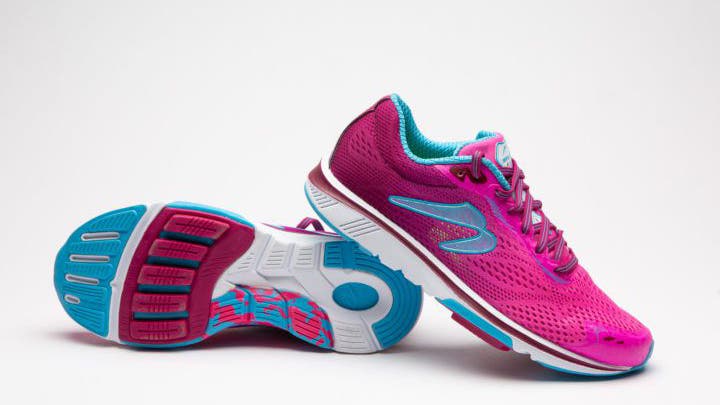
Weight: 8.8 oz (M) 7.4 oz (W)
Drop: ~3 mm
Price: $175
Newtonrunning.com
TL;DR: Newton, the original energy-return shoe, creates a shoe with full-foot stability and a flexible, breathable, foot-wrapping upper.
Before there were energy-return foams, there were Newtons. The brand’s name is a play on Isaac Newton’s third law of motion: in this case the bounce-back reaction of the forefoot lugs after being compressed into the cavity covered with a trampoline-like membrane that backs them.
This system provides generous cushioning with no loss of responsive push off, a distinctive springy ride that lasts the duration of the shoe. While the shoe doesn’t force a forefoot landing—it has a heel-cushioning pod and a 3 mm drop—you garner the full effect of the forefoot lugs when you get your weight balanced over your feet with a push-off, high-cadence stride. Testers confirmed that the shoe felt a bit awkward at first, then there’s a transition—“when you’re light on your toes and moving fast,” where suddenly running feels easier and you’re going faster.
The Motion is Newton’s stability model—with a large medial post that extends all the way forward to past the ball of your big toe. As such, it seems to enhance the responsiveness, providing a firmer push off than the neutral Gravity model, and didn’t get in the way even for some neutral testers, while some thought it made the shoe “clunky.” The flexible, snug-fitting, engineered upper drew high praise from all for being simultaneously “pared-down” and comfortable, as well as moving with the foot.
Salomon Sonic 3 Balance
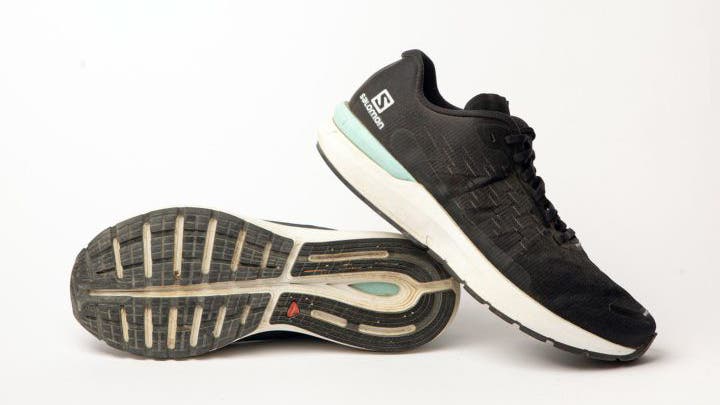
Weight: 8.9 oz (M) 7.6 oz (W)
Drop: ~8 mm
Price: $130
Rei.com
TL;DR: The best road shoe we’ve seen from Salomon, the Sonic 3 Balance delivers a smooth, balanced ride with pop.
If you think of Salomon as only having good trail shoes, this newest batch of their road shoes should change your mind. Their unique ride stems from the sole, which pairs a bouncy, elastic base with a viscous, shock-absorbing heel pad. Salomon says the combination, which they call “Optivibe,” damps vibration and reduces fatigue.
Several testers praised the ride. “Great, springy, elastic-type sole provides fantastic cushioning that really helps on the roads,” said one. Another said the shoes felt like they ran lighter than their actual weight, and “seemed to increase efficiency and reduce fatigue as the pace picked up.” But the tuning wasn’t right for everyone: One forefoot-striker felt like the sole “absorbed more than it rebounded.”
Salomon creates stability in a novel way, using deep grooves in the midsole to decouple sections of the foot and reduce rotational torque. On the Sonic 3 Balance the main groove is fairly centered, but with more of the sole falling on slightly-flared arch side, creating a feeling of support without an intrusive hard post. For more stability, you might want to opt for the Sonic 3 Confidence, in which the decoupling groove runs even farther outside, leaving a larger chunk of foam under the arch side.
Hoka Arahi 4
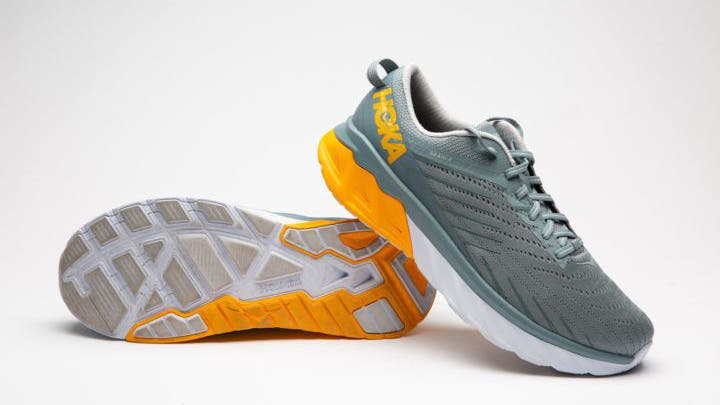
Weight: 9.8 oz (M) 8.6 oz (W)
Drop: ~5mm
Price: $130
Hokaoneone.com
TL;DR: Stable, but snappy, the latest version of the Arahi is more ventilated with an updated upper.
In terms of the prototypical do-it-all shoe, Hoka’s Arahi 4 does a great job of being everything to almost everyone. This pair does a great job of rounding off a very pared back level of cushioning (in terms of Hoka’s general frame of reference) with some pretty legit structure. In fact, this is a shoe that may not look like a stability shoe, but in practice, it’s stable enough for those who need it while getting out of the way for those who don’t. Much of this is thanks to Hoka’s unique and deceptively simple “J-Frame” midsole that wraps around from midway on the lateral side to most of the way down the medial side.
Testers really liked the updated upper with a refined tongue and more aerated top, and Hoka’s oft-ubiquitous heel tab makes this a killer option for long-course racers who might still need some stability. That said, the Arahi 4 is springy enough to work super well for fast days or race day, but they’re probably not the perfect shoe to serve as a replacement for a lightweight trainer or race flat. The only slight question mark on these shoes is durability, as testers found the outsole to be wearing at a much faster rate than one would expect on a stability pair.
Spring Running Shoe Reviews: High Energy
While “bouncy” is another term that works for this new-ish category of shoes, the focus here is going to be a mixture of big cushion and big return. Thanks to new materials and devices embedded into the midsole of the shoe, brands are able to make very dramatic feeling models that either work really well for certain runners, or don’t. While some runners may report a huge lift in speed, others may report a certain flatness or—worse yet—the feeling that they’re out of sync with their own stride. Imagine playing a piano out of tune. The good news is that most of these shoes work well for most people, but you’ll be looking at a slightly bigger gamble in the high energy category than something else above.
Asics Gel Nimbus Lite
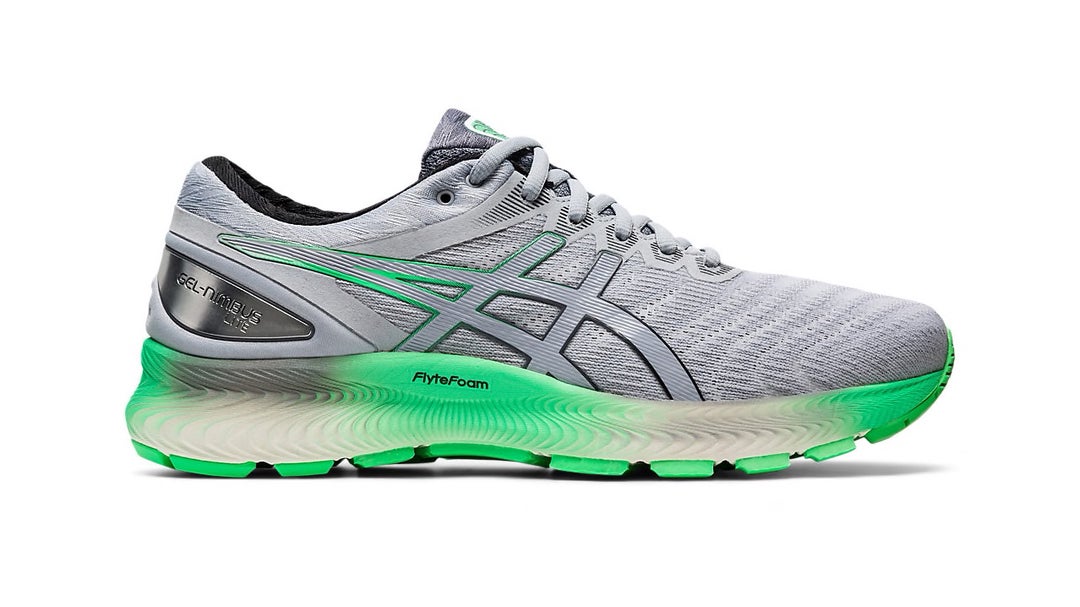
Weight: 9.7 oz (M) 8.6 oz (W)
Drop: ~13 mm
Price: $150
Roadrunnersports.com
TL;DR: Durable cushioning in a lightweight, comfortable and performance-oriented vehicle
The one-piece, encapsulated-gel FlyteFoam midsole worked well for its cushioning, comfort, flexibility and road feel. Although one tester complained the cushioning was in the wrong place and threw off their footstrike, another found them one of the best-riding shoes he’s ever worn. “They were soft, smooth, flexible,” he said. “I’m a heavy guy and this shoe is one of the few that cushions and rolls just right for my stomping stride.” Several testers reported that heel-to-toe transition of the Nimbus Lite was seamless and some found themselves adding extra distance to their runs.
As extra credit, nearly all of the breathable, secure and comfortably-fitting upper is constructed with recycled, sustainable fiber material that increases the durability. The shoe is true to size but the forefoot isn’t wide enough to allow for full toe splay.
Puma Speed Sutamina
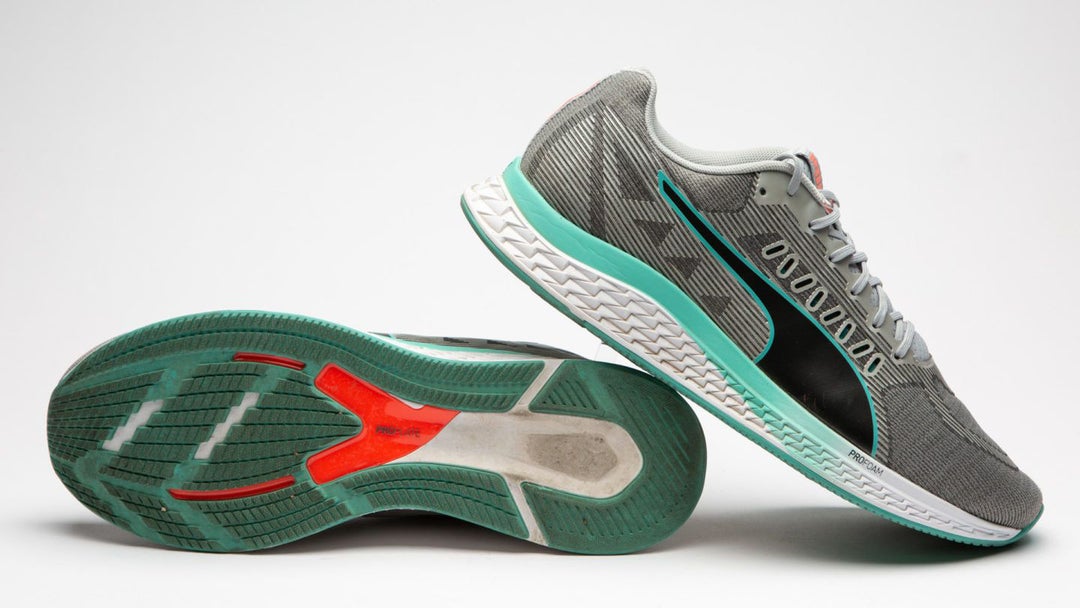
Weight: 10.4 oz (M) 8.5 oz (W)
Drop: ~12 mm
Price: $100
Us.puma.com
TL;DR: Light shoe for light distances and light runners doing speed work—or for fitness and fashion
What is effectively Puma’s reentry into running after a couple years’ absence is this light trainer with a bit of pop from an embedded plastic plate and its ProForm, energy-returning midsole. While testers universally raved about the shoe’s aesthetics, the feedback was rather “meh” on the shoe’s performance. The plastic midsole plate did help to get testers up on their toes quickly when they used the shoes for up-tempo running, but the transition felt awkward.
Testers characterized the Speed Sutamina as more of a fitness shoe that wasn’t all that durable or performance-oriented. The midsole ride was surprisingly somewhat standard, and didn’t have enough cushioning for middle or heavyweight runners or for comfort over runs longer than 10K. The upper fit was true to size but seemed to be finicky, not wrapping all foot shapes well and not comfortable for those with wide feet or for testers who wanted to spread their toes.
“This is one of those pairs of shoes I would wear more for general fitness activities,” summed up a tester. “I would probably walk around in them for comfort—and for that purpose, they deliver just fine.”
UA HOVR Machina
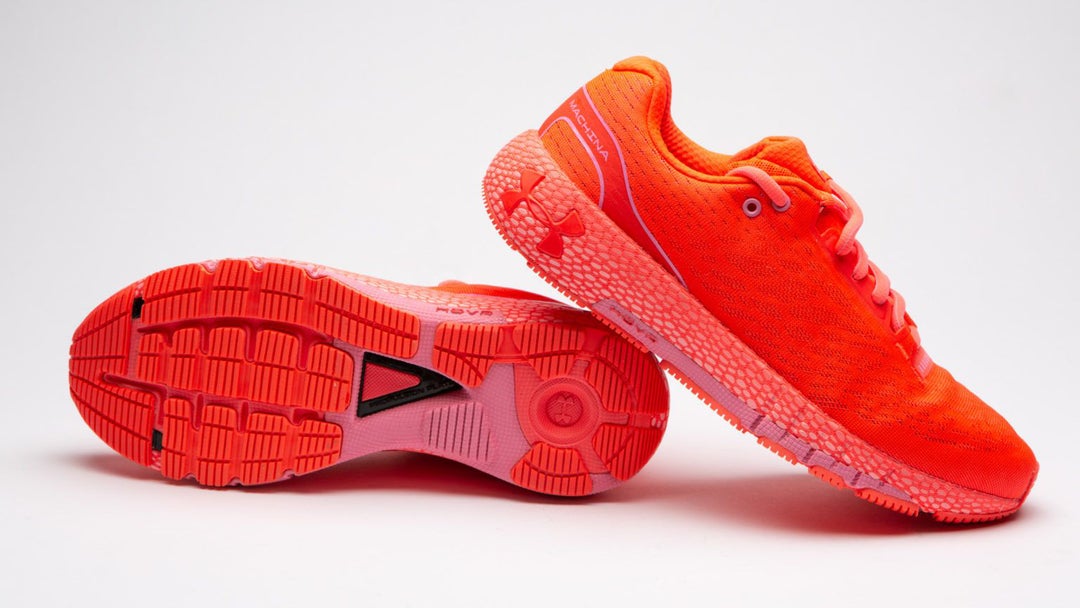
Weight: 10.4 oz (M) 8.7 oz (W)
Drop: ~8 mm
Price: $150
Roadrunnersports.com
Though Under Armour is more of a sophmore in the shoe game compared to seniors like Asics or Mizuno, they’ve still spend a lot of time (and presumably money) on refining their line. With the HOVR Machina, UA has hit one of their marks with a super high-tech shoe that doesn’t feel particularly different than just a great shoe. While some brands have swung for the fences with mixed results, UA used a measured amount of carbon (via a two-pronged carbon-filled Pebax propulsion plate) with a full foot of their HOVR foam. The result is a shoe that feels fast when it should and feels supportive when you’re just plodding along.
Despite its appearances, the performance of this shoe isn’t flashy—you won’t feel like you’re being catapulted forward or mushing into a wedding cake either. The predictability and ability of this shoe to work super well makes this a great choice for a far greater swath of runners than maybe any other shoe in this category. Another feature that’s literally hidden inside the eye-searingly bright foam is the embedded Bluetooth pod that tracks cadence, impact time, and the unique foot strike angle metric. When connected to the smartphone app, you’ll also be able to get “live coaching” that basically gives prompts when your cadence drifts too low or too high, based on your speed. The pod also works minimally with smartwatches to display cadence. Finally a new-ish brand is using new tech in a responsible way.
Topo Athletic Zephyr
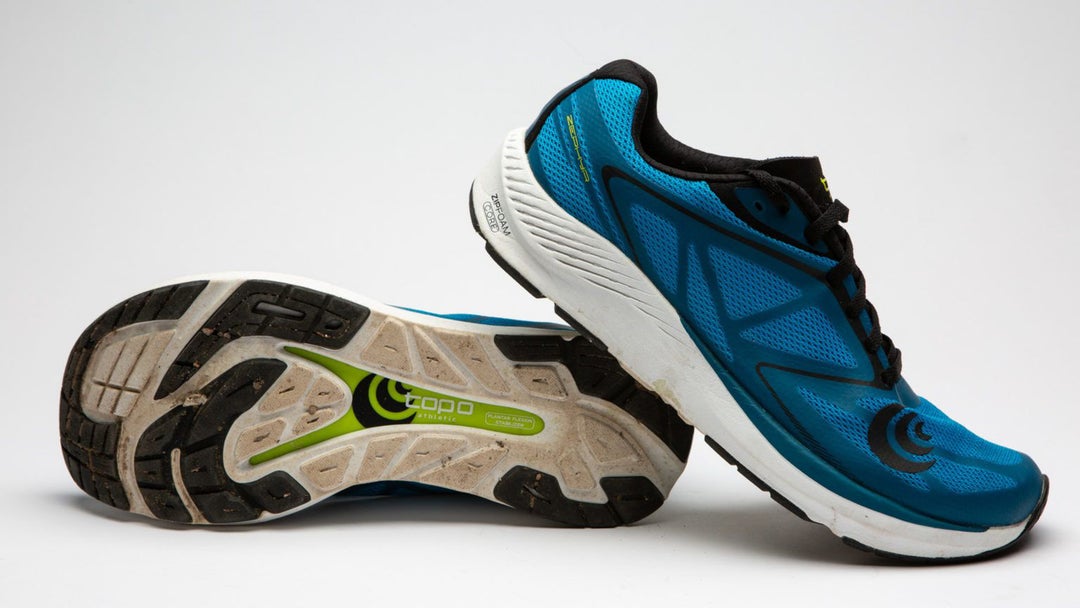
Weight: 9 oz (M) 7.4 oz (W)
Drop: ~5 mm
Price: $130
Topathletic.com
TL;DR: Natural running geometry gets a little boost and stability to go the distance quickly.
Topo Athletic, which makes shoes with low heel height and room for your toes, added a slight twist to its recipe for natural running, putting in a 5 mm drop between the 28 mm heel and 23 mm forefoot, along with a midsole-stabilizing plate to contain forefoot motion and boost propulsion.
Testers found this execution effective but said the performance could just as easily be attributed to the wide toe box and ZipFoam, a high-rebounding material embedded in the midsole. “It’s fast because it’s light and comfortable, and maybe the stiff insert helps,” said one skeptic. Still, the decision was unanimous that the springy, proprietary midsole compound was a bonus—testers found the balance of cushiness and stability was well suited for runs as far as 50K.
The jury was out, however, on whether the elastomer propulsion plate aided or inhibited performance. Testers warned that the lack of flexibility in the plate detracted a bit from the experience for some. “The plate seemed to try to control my foot motion during some landings, causing somewhat awkward transitions to the toe-off,” one tester described, yet noted, “At other times, it felt stable and fast.”